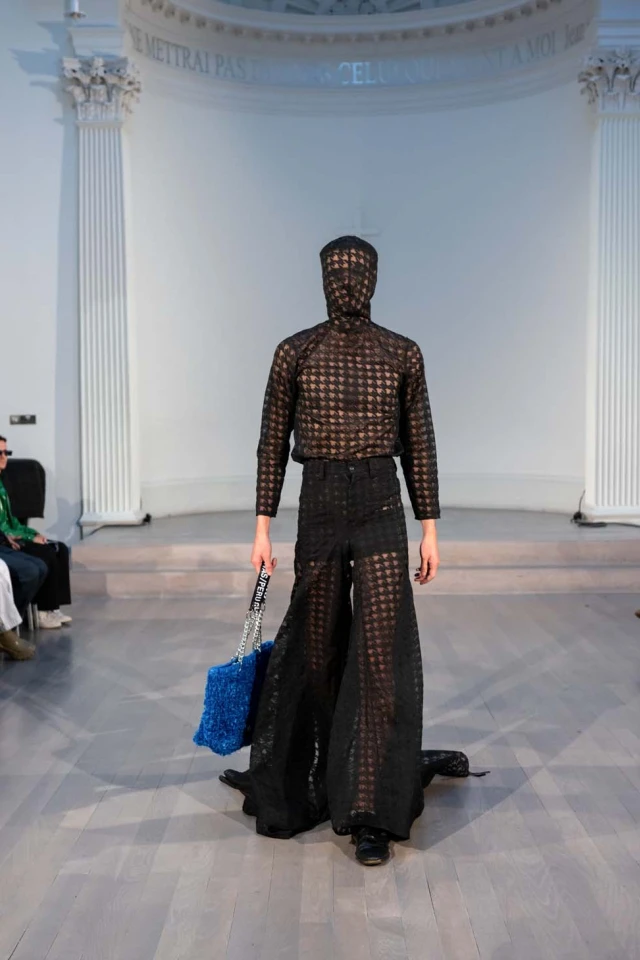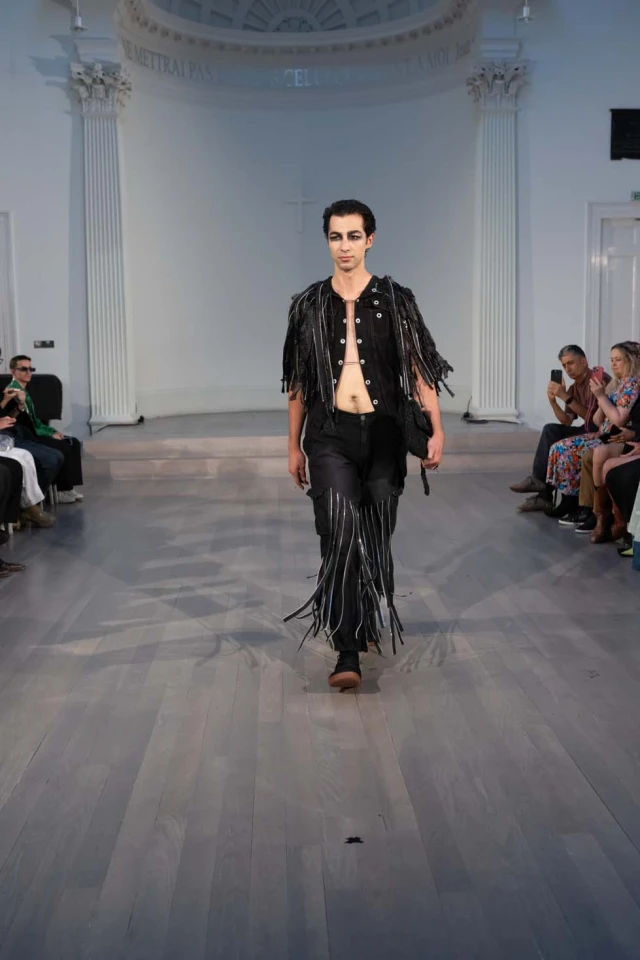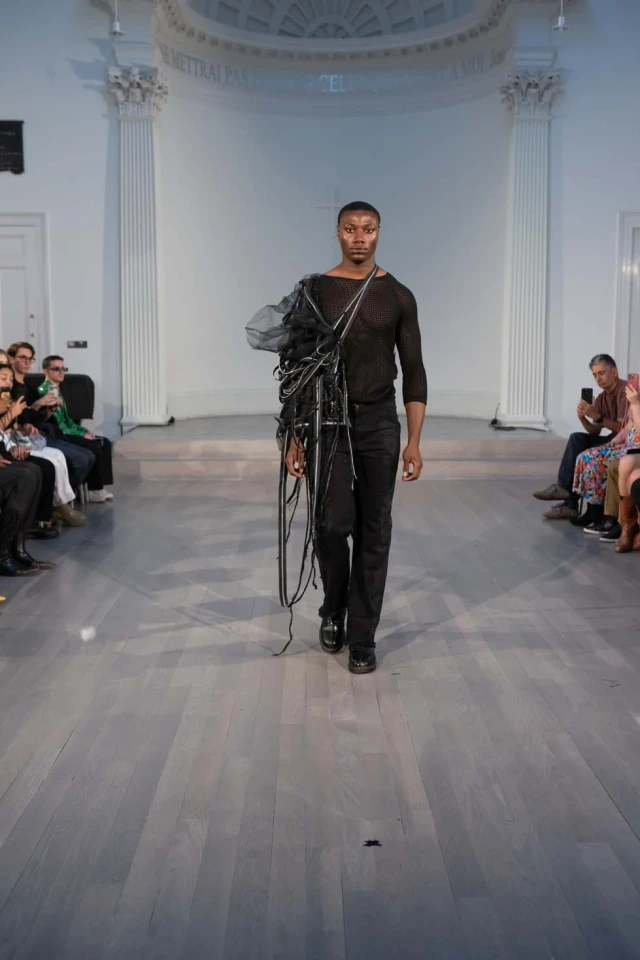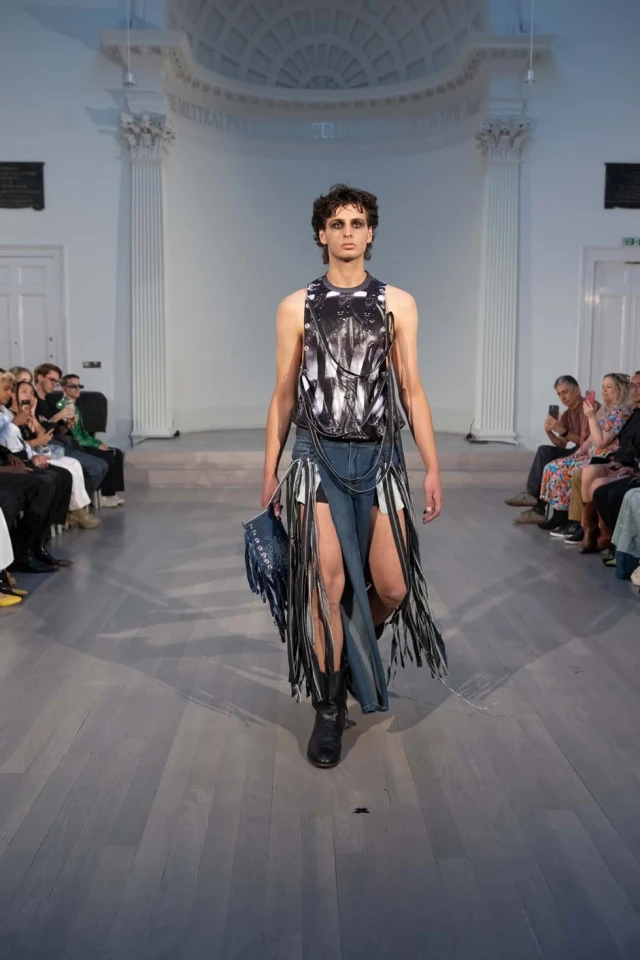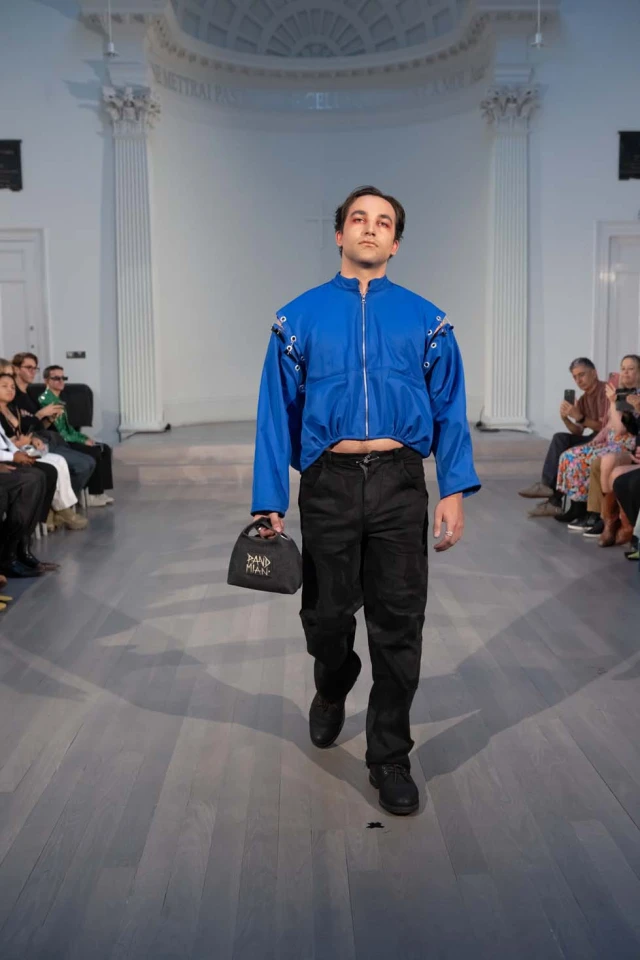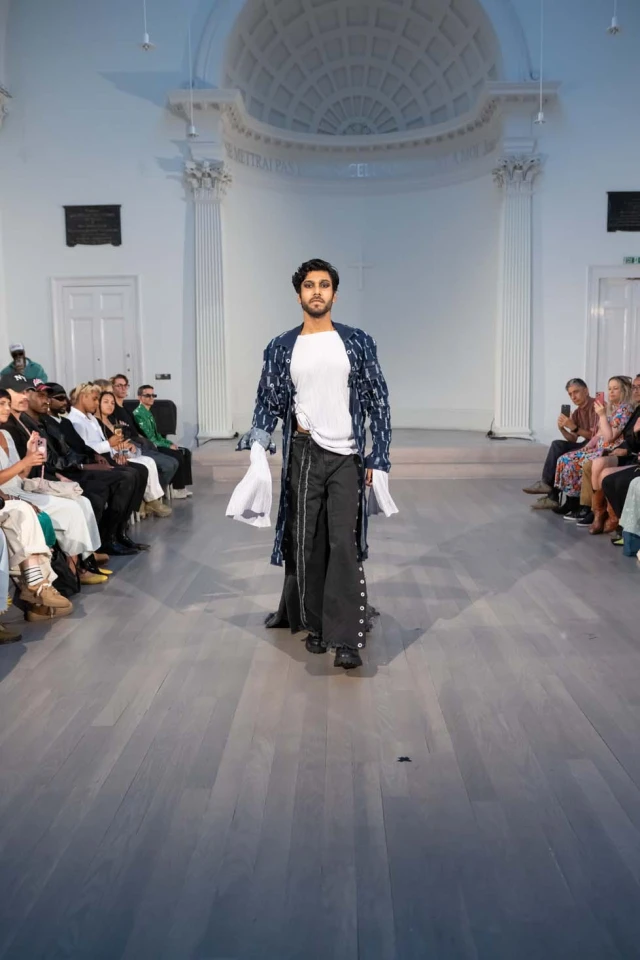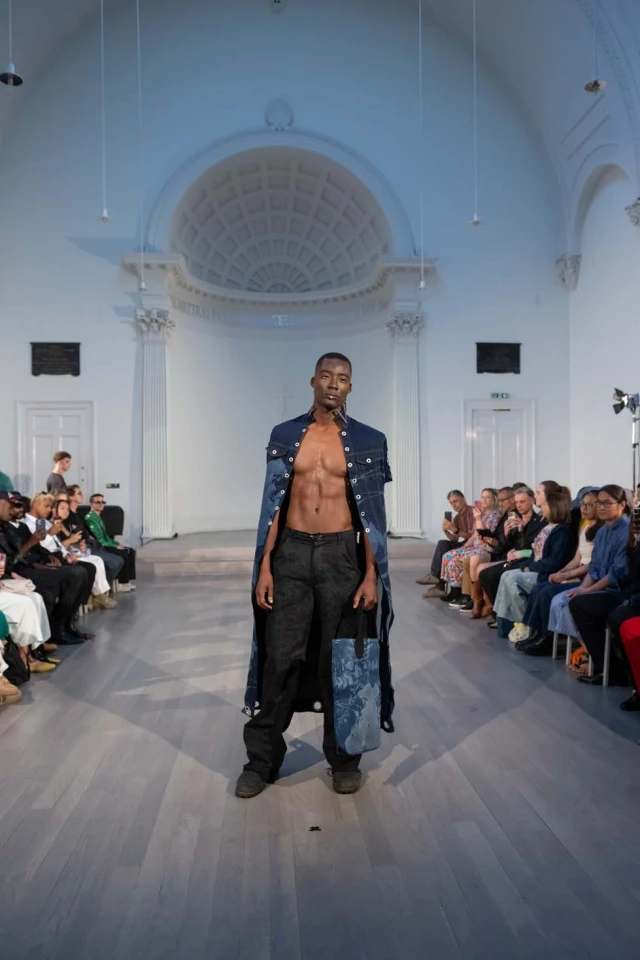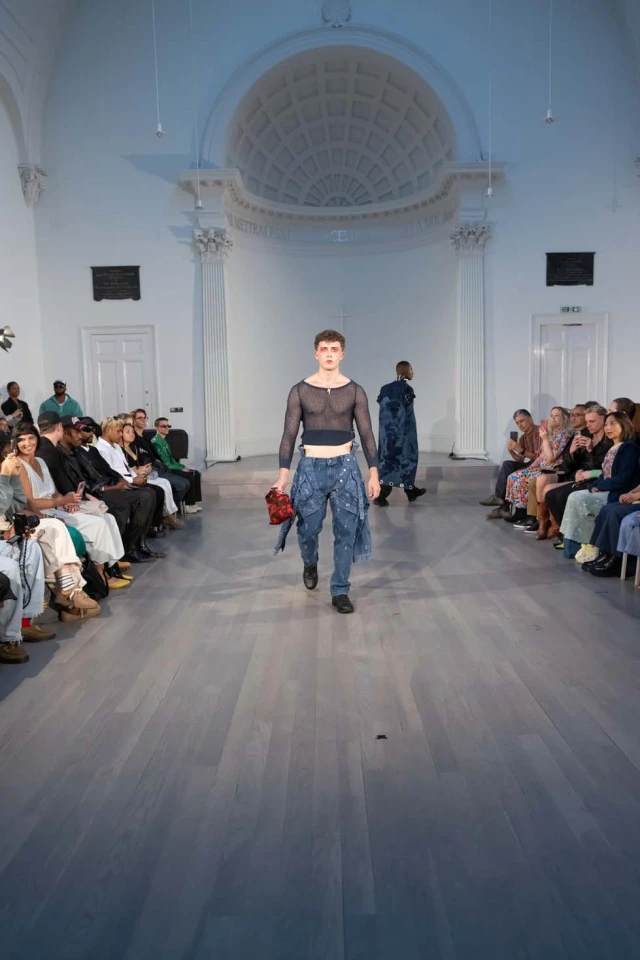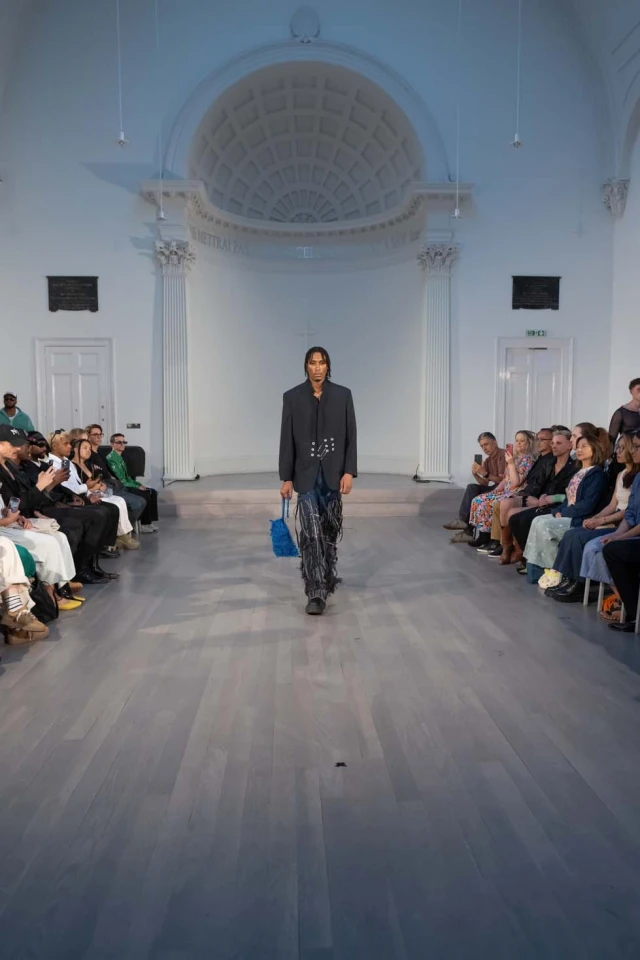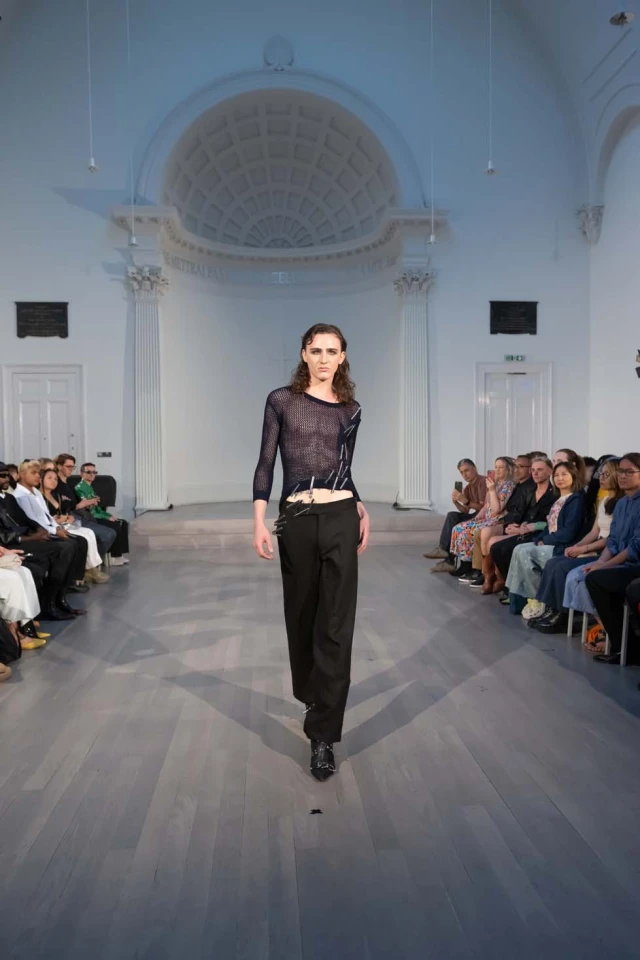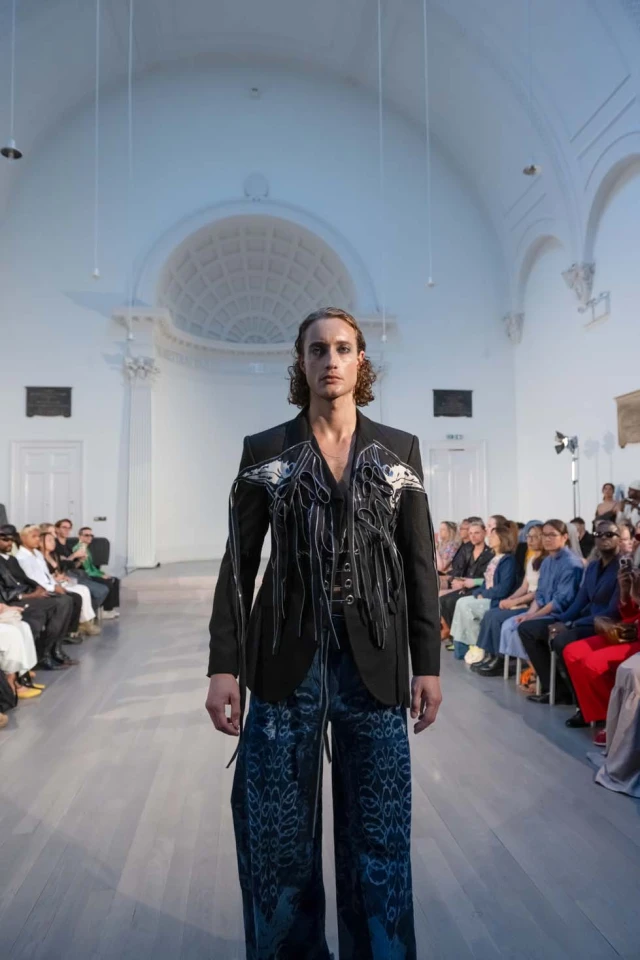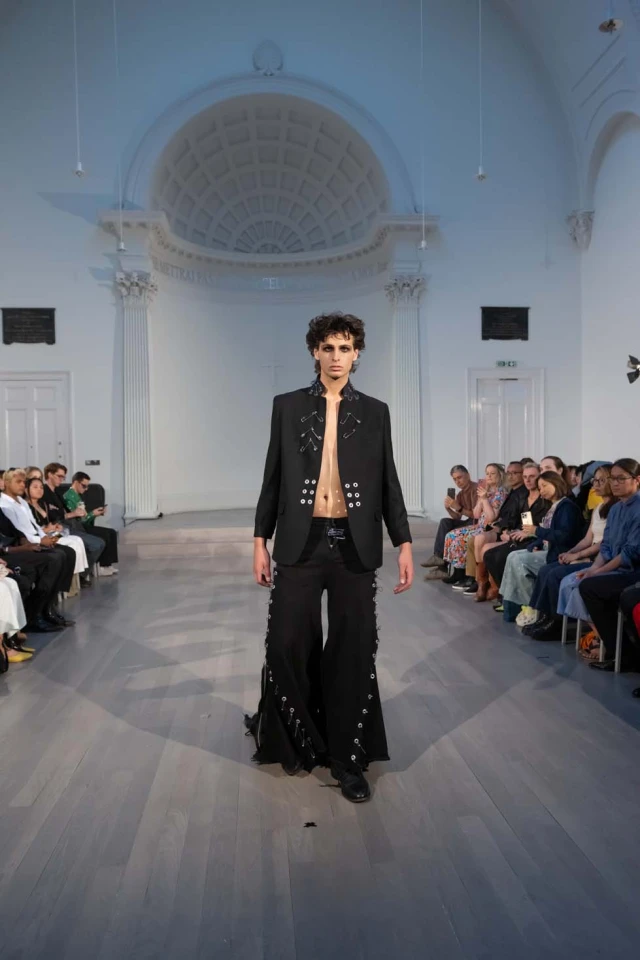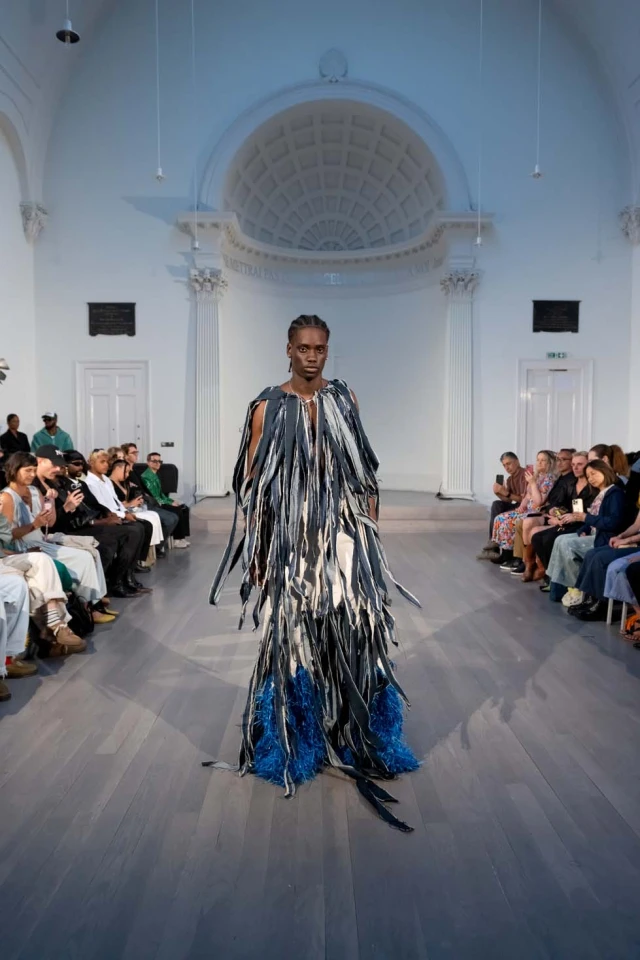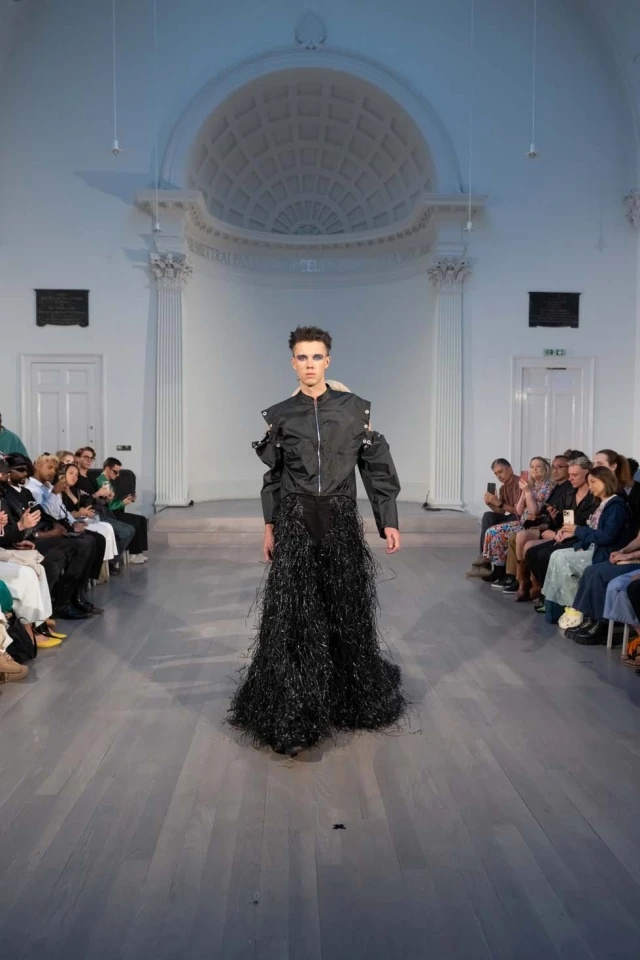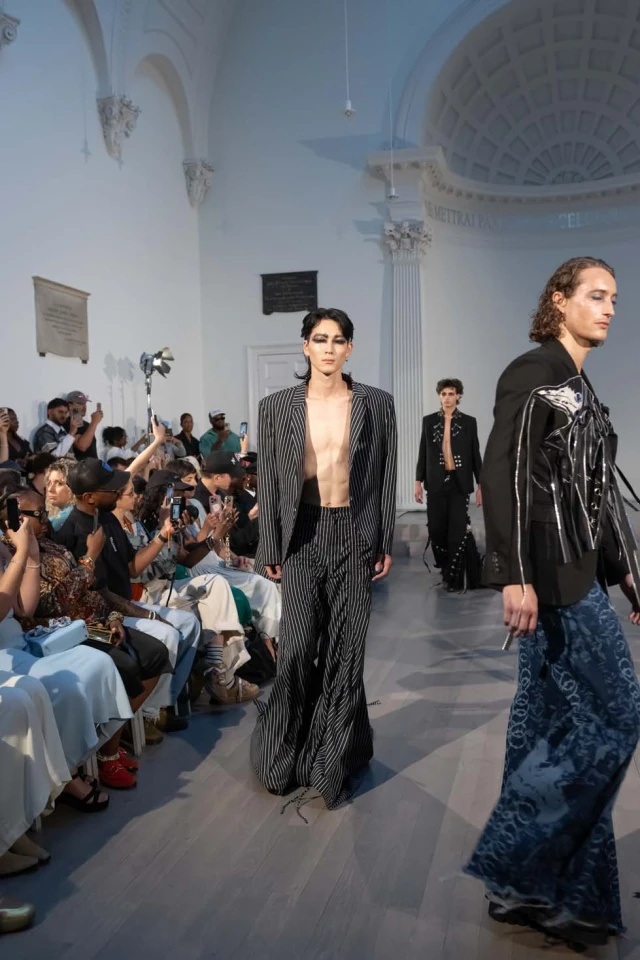On a warm Monday in mid-summer, Genaro Rivas returned to London with A Feast for Crows—his Spring/Summer 2026 menswear collection, presented in a deconsecrated church in Covent Garden. The Peruvian designer, recently awarded the Vogue Business x Visa Young Creators prize, continues to explore purpose-driven fashion, this time focusing on denim as a new material within his established sustainable practice.
Following a preview at Berlin Fashion Week, the London show revealed a collection crafted entirely from recovered and sustainable denim, shaped through zero-waste pattern cutting, hand embroidery, 3D printing, and laser engraving. From fabric sourcing to finishing, every step embraces circularity and conscientious production, with 95% of the labour led by women across Peru and London. The result is a collection that feels both technically meticulous and deeply considered—an authentic continuation of Rivas’s commitment to ethical creation.
The first two looks presented a subtle tension between contrast and cohesion. Both grounded in black denim, the opening outfit layered unexpected textures: denim shorts peeked out from beneath sheer, flowing trousers, paired with a long-sleeve top and a face mask that obscured the wearer’s identity, lending an enigmatic edge.
By contrast, the second outfit felt lighter and more playful. An unbuttoned denim jacket, edged with a white fringe detail, sat atop sleek black denim jeans echoing the same triangular fringe motif. The embellishments hinted at a nod to the designer’s Peruvian heritage, weaving tradition into modernity with a subtle but striking gesture.
As the collection unfolded, hardware became a key detail - rings of varying sizes, safety pins, and oversized metal buttons punctuated the denim with a rebellious edge. One look that truly caught my eye was a long-sleeve white top with exaggeratedly long sleeves peeking out from beneath a wide-open denim shirt. The white top’s scrunched texture and asymmetric taper created a striking contrast against the loose, blue denim shirt, which was boldly adorned with safety pins. The interplay of textures and shapes here made for a captivating, unexpected combination.
Several outfits played with the tension between rugged workwear and traditionally tailored pieces like blazers. One of the standout looks, highlighted in the press release, was a black blazer that balanced deconstruction and detail. Unbuttoned but held together by safety pins, it featured laser-etched reinterpretations of two iconic raven artworks - Raven (1831) by Robert Havell, Jr., and Le Corbeau (1875) by Édouard Manet - mirrored on either side of the jacket. Skinny fabric trimmings cascaded across the piece, creating an illusion of secrecy that echoed motifs introduced earlier in the collection, weaving a sense of mystery into the sharp tailoring.
Another standout was a blazer adorned with decorative safety pins at the top, its buttons replaced by multiple silver rings. A long row of rings and safety pins ran down the trousers, bringing 80s punk chic vividly to life - raw, edgy, and utterly captivating. Love.
I was particularly taken with the closing look: a pinstripe black suit with trousers so wide and long they seemed almost impractical, exactly the rebellious silhouette I was hoping for. It was show-stopping, loud, and unapologetically bold, like someone strutting down the street with confidence to spare.
